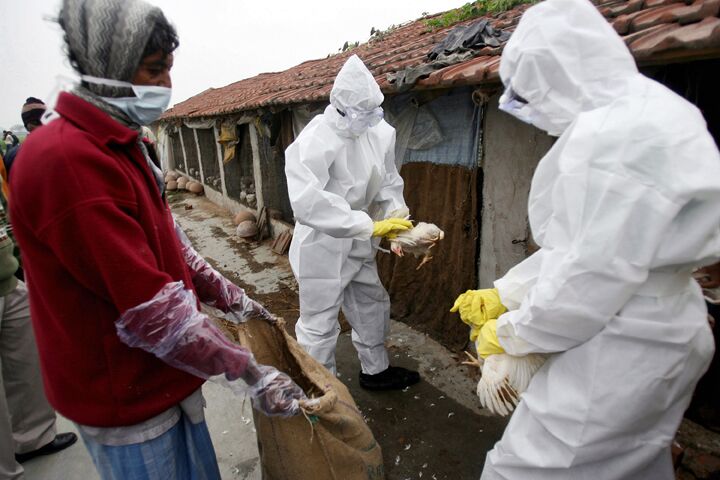
Bird Flu Threatens India
India is facing its third and worst bird flu outbreak, and the infection has already covered more than half of West Bengal. Meanwhile, the United Nations has warned that drastic measures in neighboring Bangladesh are necessary to contain the h5n1 strain.
“Altogether 934 culling teams are involved in slaughtering poultry,” said [West Bengal animal resources minister Anisur] Rahaman, adding teams had killed nearly 700,000 out of 2.2 million chickens slated to be culled (Agence France Presse, January 24).
“The remaining will be culled in the next three to four days,” he said.
Teams across the region are culling chickens in an effort to stop the flu from spreading to humans, particularly in cities like crowded Calcutta, where officials went stall to stall in poultry markets in an attempt to head off an epidemic after an infection was discovered just 18 miles away.
The disease, often lethal among humans, usually makes the jump when a person comes into direct contact with infected poultry. On Wednesday, a Vietnamese man died from the disease, followed by a man in Indonesia dying on Thursday.
Indian officials believe the outbreak, which began last February and has recently worsened dramatically, began in Bangladesh, its impoverished eastern neighbor. Although the Bangladeshis claim the disease is contained, the UN Food and Agriculture Organization is calling for “house-to-house surveillance” to ward off a deadly outbreak there.
The Centers for Disease Control and Prevention (cdc) reports,
Of the few avian influenza viruses that have crossed the species barrier to infect humans, h5n1 has caused the largest number of detected cases of severe disease and death in humans. …Of the human cases associated with the ongoing h5n1 outbreaks in poultry and wild birds in Asia and parts of Europe, the Near East and Africa, more than half of those people reported infected with the virus have died. Most cases have occurred in previously healthy children and young adults and have resulted from direct or close contact with h5n1-infected poultry or h5n1-contaminated surfaces.
The cdc states that the flu strain “remains a very rare disease in people,” and that human-to-human spread of h5n1 so far has been “limited, inefficient and unsustained.”
“Neither Bangladesh nor India has so far had any human cases of bird flu,” afp reported. “But Rahaman said he feared the disease would spread to humans with hundreds of people reporting flu symptoms and children ‘playing with chickens.’”
The cdc explains the well-founded reason for such fear:
Nonetheless, because all influenza viruses have the ability to change, scientists are concerned that h5n1 virus one day could be able to infect humans and spread easily from one person to another. Because these viruses do not commonly infect humans, there is little or no immune protection against them in the human population. If h5n1 virus were to gain the capacity to spread easily from person to person, an influenza pandemic (worldwide outbreak of disease) could begin.
Lethal pandemics like avian flu are forecasted in the Bible. If you would like to learn more about this plague and how to protect yourself from it, read “Disease Pandemics Are Coming.”
